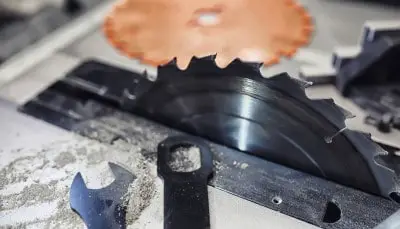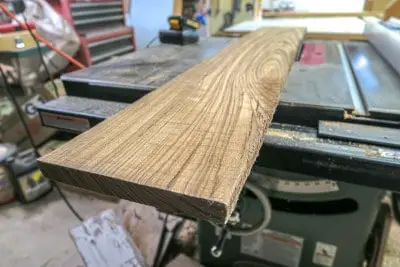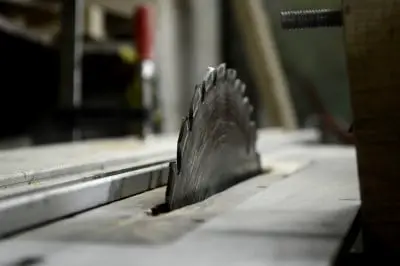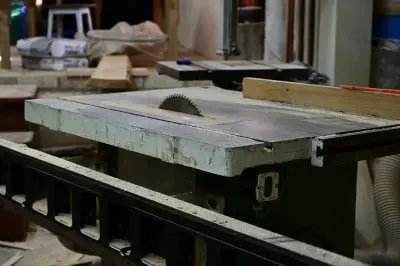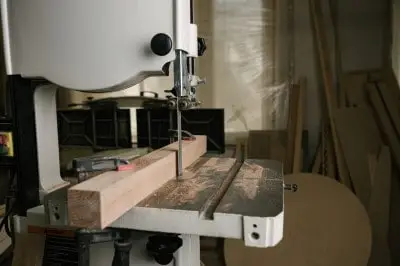Table saws are essential tools for woodworking projects, and choosing the right one can make all the difference in the quality and precision of your work.
Contractor, cabinet, and hybrid table saws are three main types of table saws. Contractor saws are portable and budget-friendly. Cabinet saws are heavyweight and provide excellent dust collection, power, and accuracy. Hybrid saws offer a blend of both, with a lower price point and moderate power and accuracy. The choice of table saw type depends on the user’s needs, budget, and workspace.
In this article, we’ll explore the key differences between Contractor, Cabinet, and Hybrid Table Saws, to help you make an informed decision when selecting a table saw.
Whether you are a professional woodworker or a DIY enthusiast, this guide will provide you with the information you need to choose the right type of table saw for your specific needs and budget.
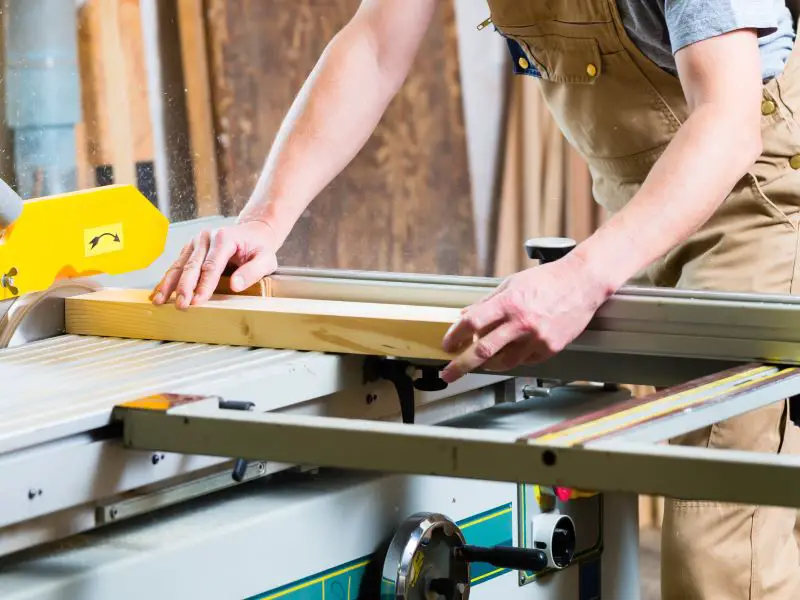
How to Choose The Right Table Saw
| Feature | Contractor Table Saw | Cabinet Table Saw | Hybrid Table Saw |
|---|---|---|---|
| Price Range | $500 – $2,000 | $1,500 – $5,000 | $1,000 – $3,000 |
| Power | 1.5 – 2.5 HP | 3 – 5 HP | 2 – 3 HP |
| Dust Collection | Fair | Excellent | Good |
| Mobility | Mobile | Stationary | Mobile |
| Blade Size | 10″ | 10″ or 12″ | 10″ or 12″ |
| Rip Capacity | Up to 30″ | 30″ or more | 30″ or more |
| Precision | Moderate | High | Moderate |
| Noise Level | Moderate | High | Moderate |
| Fence System | Good | Excellent | Good |
| Best For | Portable use, home shops | Large commercial shops | Home shops, small commercial shops |
When choosing a table saw, there are several main factors to consider:
Intended Use: Determine what types of woodworking projects you will be undertaking and choose a saw that is suitable for your needs. For example, a cabinet saw is ideal for heavy-duty commercial use, while a contractor saw is better for light commercial or home use.
Power: Consider the horsepower of the saw’s motor, which affects the saw’s cutting ability. More powerful motors are better suited for thicker, denser woods.
Blade Size: The blade size will determine the saw’s maximum cutting depth and overall capacity. Choose a blade size that is appropriate for the types of cuts you need to make.
Dust Collection: Look for a saw with good dust collection capabilities, which will help keep your workspace clean and improve air quality.
Safety Features: Choose a saw with built-in safety features, such as blade guards and riving knives, to reduce the risk of injury.
Price: Consider your budget and choose a saw that provides the best value for your money.
Contractor Table Saw
Contractor table saws are a popular choice for many woodworkers due to their portability and budget-friendly price point. Here are some pros, cons, and best use cases for contractor table saws:
Pros:
- Portability: Contractor table saws are designed to be portable and can be moved from job site to job site with relative ease.
- Affordability: Contractor table saws are generally less expensive than cabinet saws, making them an excellent option for home workshops or light commercial use.
- Power: Contractor saws typically have a good balance of power and accuracy for their size, making them suitable for most woodworking projects.
- Space-saving: Contractor saws are often smaller than cabinet saws, making them a good choice for those with limited workspace.
Cons:
- Accuracy: While contractor saws can offer a decent level of accuracy, they may not be as precise as cabinet saws due to their lighter weight and construction.
- Dust Collection: Contractor saws generally have fair to moderate dust collection capabilities, which may require additional dust collection systems to be installed.
- Durability: Contractor saws are not designed for heavy-duty use and may wear out more quickly than cabinet saws.
Contractor saws are best for those who need a saw that is portable and budget-friendly, while still providing a decent level of power and accuracy. They are a great option for home workshops or light commercial use, such as building decks or remodeling projects.
However, if you require more accuracy and durability, a cabinet saw may be a better option for heavy-duty commercial use.
Cabinet Table Saw
Cabinet table saws are a heavy-duty, stationary option for woodworking professionals. Here are some pros, cons, and best use cases for cabinet table saws:
Pros:
- Power: Cabinet saws typically have powerful motors that can handle the toughest cutting jobs, making them ideal for heavy-duty commercial use.
- Accuracy: Cabinet saws offer the highest level of accuracy and precision due to their heavy construction and superior design.
- Durability: Cabinet saws are built to last and can withstand frequent use in commercial settings.
- Dust Collection: Cabinet saws usually have excellent dust collection capabilities, which improves air quality and keeps workspaces clean.
Cons:
- Price: Cabinet saws are generally the most expensive type of table saw, making them less accessible to hobbyists or those with limited budgets.
- Space: Cabinet saws are large and heavy, and require a dedicated space in the workshop, which may not be feasible for smaller shops or home workshops.
- Mobility: Cabinet saws are stationary and not portable, which means they are not ideal for job sites or projects that require frequent movement.
Cabinet saws are best for woodworking professionals who need a high level of accuracy and precision, and require a saw that can handle heavy-duty commercial use.
They are ideal for large commercial shops, where they can be set up permanently and used frequently for a wide range of projects.
Cabinet saws are not recommended for those with limited space, budget, or mobility needs, but they are the top choice for professionals who demand the highest level of quality and durability from their tools.
Hybrid Table Saw
Hybrid table saws are a combination of contractor and cabinet saws, offering a blend of features from both types. Here are some pros, cons, and best use cases for hybrid table saws:
Pros:
- Price: Hybrid saws are generally less expensive than cabinet saws, making them a good option for those who want a saw with a higher level of accuracy but have a limited budget.
- Power: Hybrid saws typically have a decent amount of power, making them suitable for most woodworking projects.
- Accuracy: Hybrid saws offer a higher level of accuracy than contractor saws due to their heavier construction, improved design, and features like an improved fence system.
- Dust Collection: Hybrid saws usually have good dust collection capabilities, which improves air quality and keeps workspaces clean.
Cons:
- Mobility: Hybrid saws are not as portable as contractor saws and may be challenging to move around the workshop due to their heavier construction.
- Limited availability: Hybrid saws are not as widely available as contractor and cabinet saws, so finding replacement parts or accessories may be more challenging.
- Limited power: Hybrid saws may not have the same level of power as cabinet saws, making them unsuitable for the heaviest-duty commercial use.
Hybrid saws are best for those who need a saw that is more accurate than a contractor saw, but who have a limited budget or don’t require the heavy-duty use of a cabinet saw.
They are suitable for small commercial shops or home workshops, where a high level of accuracy is required, but heavy-duty commercial use is not needed.
Hybrid saws are a good choice for intermediate or experienced woodworkers who need a more precise saw but do not require the highest level of power or durability.
Conclusion
Choosing the right table saw for your needs depends on several factors, including your intended use, budget, available space, and mobility requirements.
Contractor saws offer portability and affordability, making them an excellent choice for home workshops and light commercial use.
Cabinet saws provide the highest level of accuracy, power, and durability, making them the top choice for heavy-duty commercial use.
Hybrid saws offer a blend of features from both contractor and cabinet saws, providing a higher level of accuracy than contractor saws but at a lower price point than cabinet saws.
By considering these factors, you can choose the right type of table saw for your specific needs and budget, allowing you to make precise, high-quality cuts in your woodworking projects.



